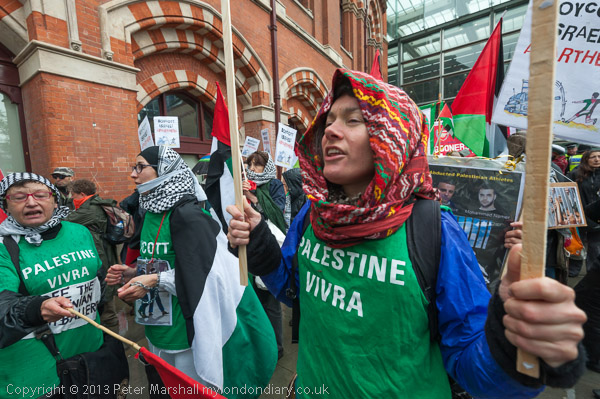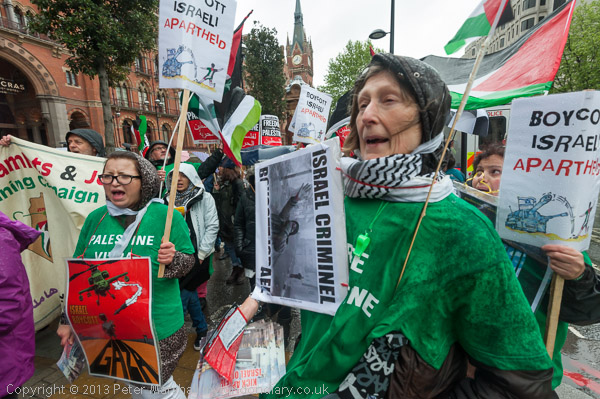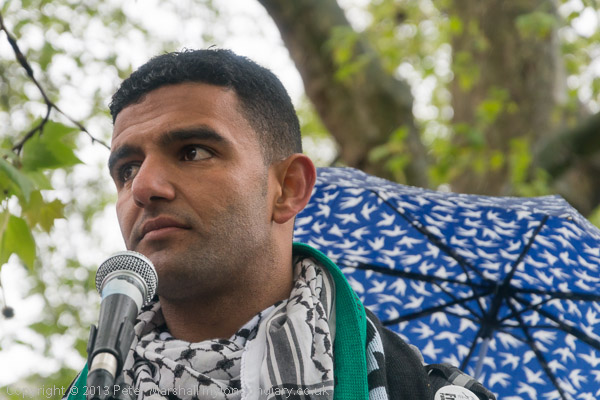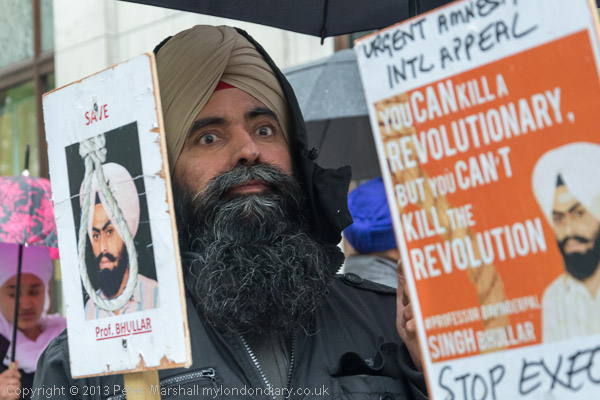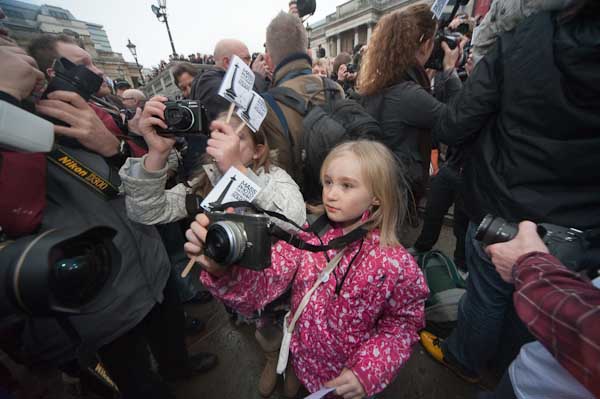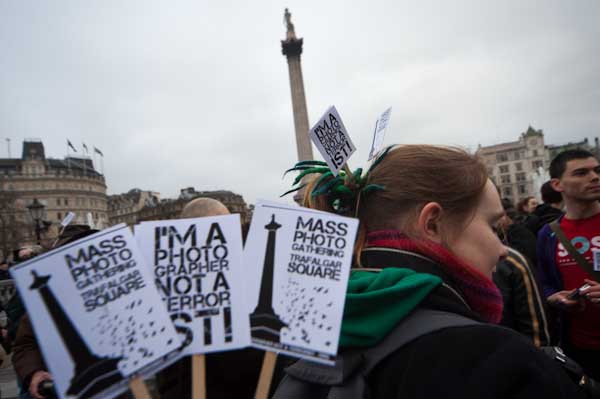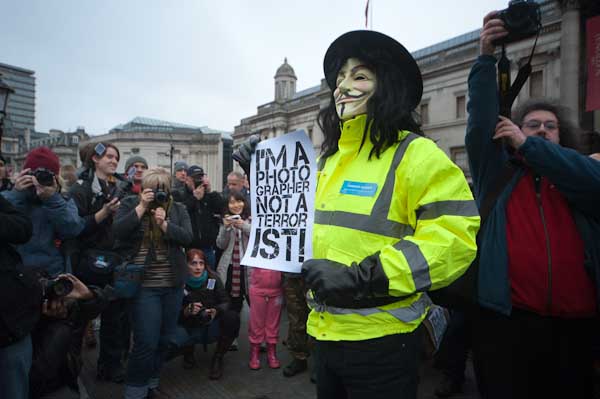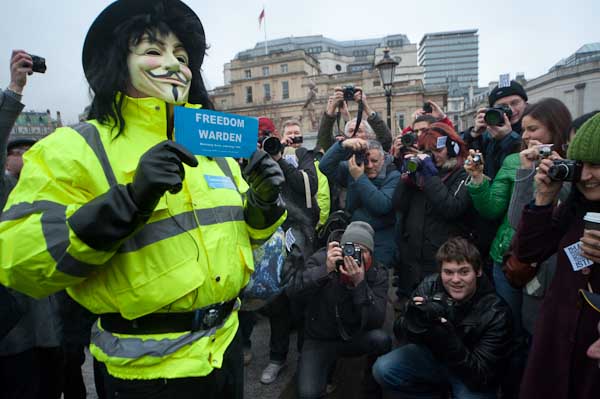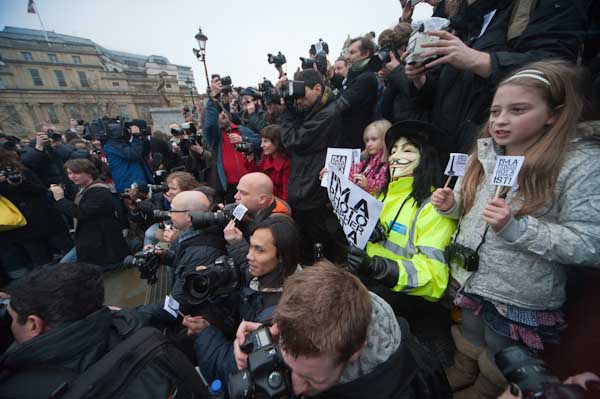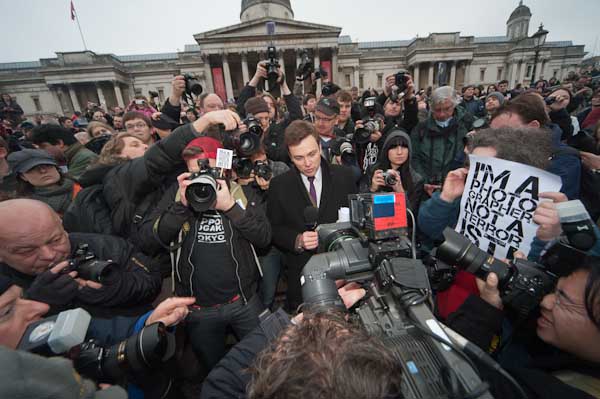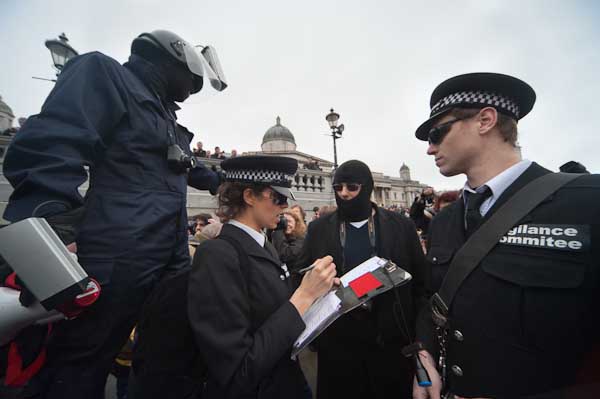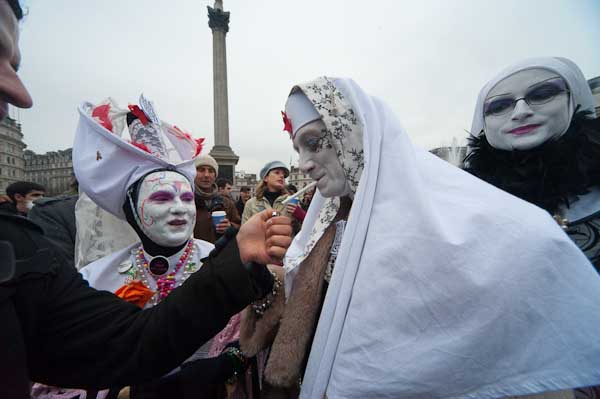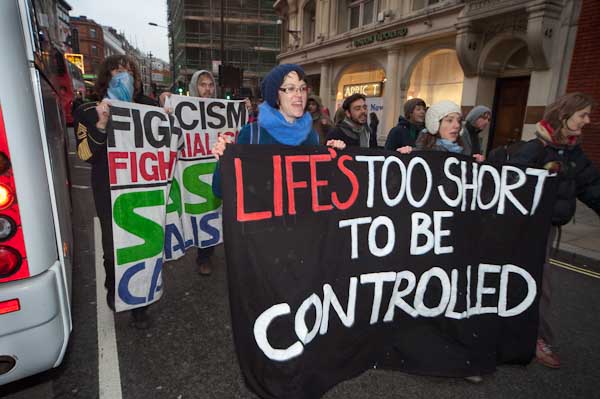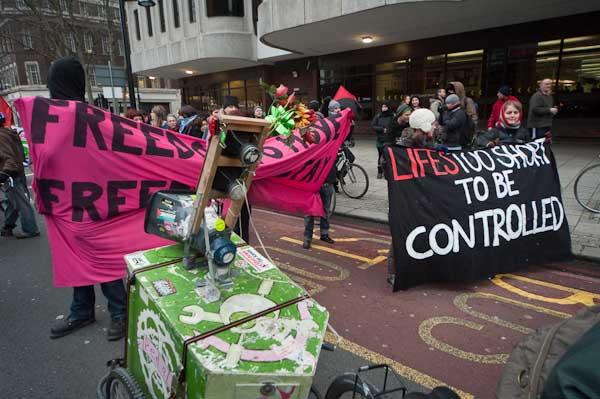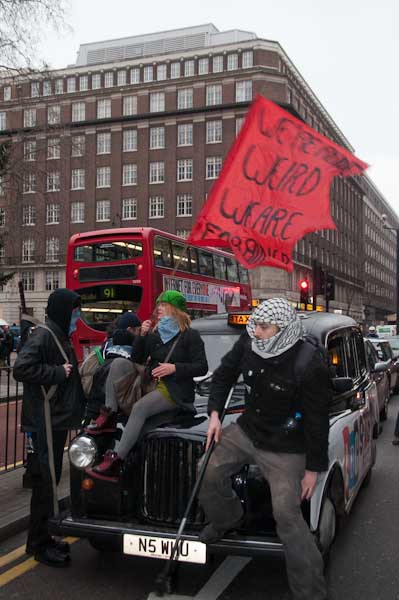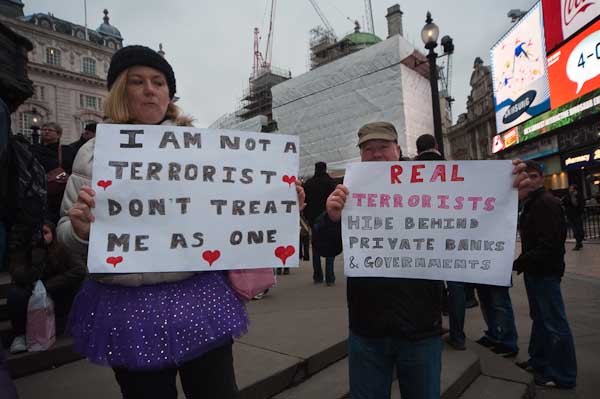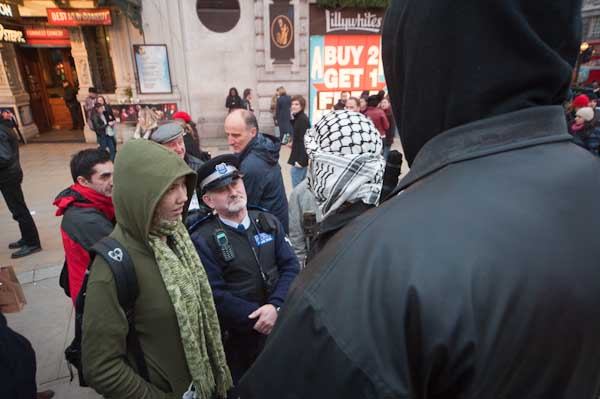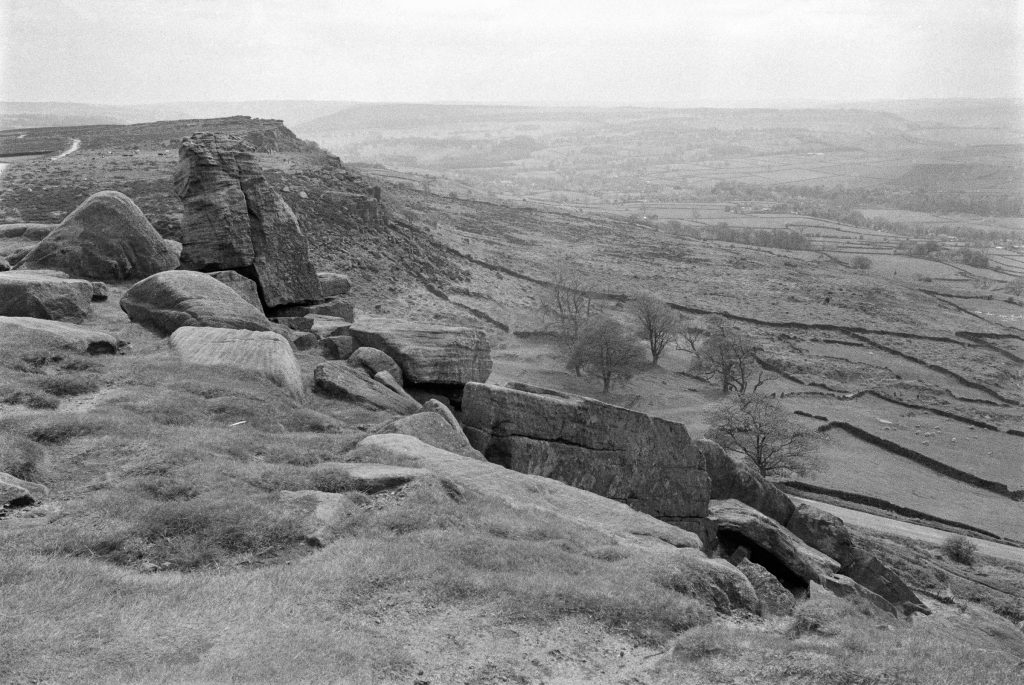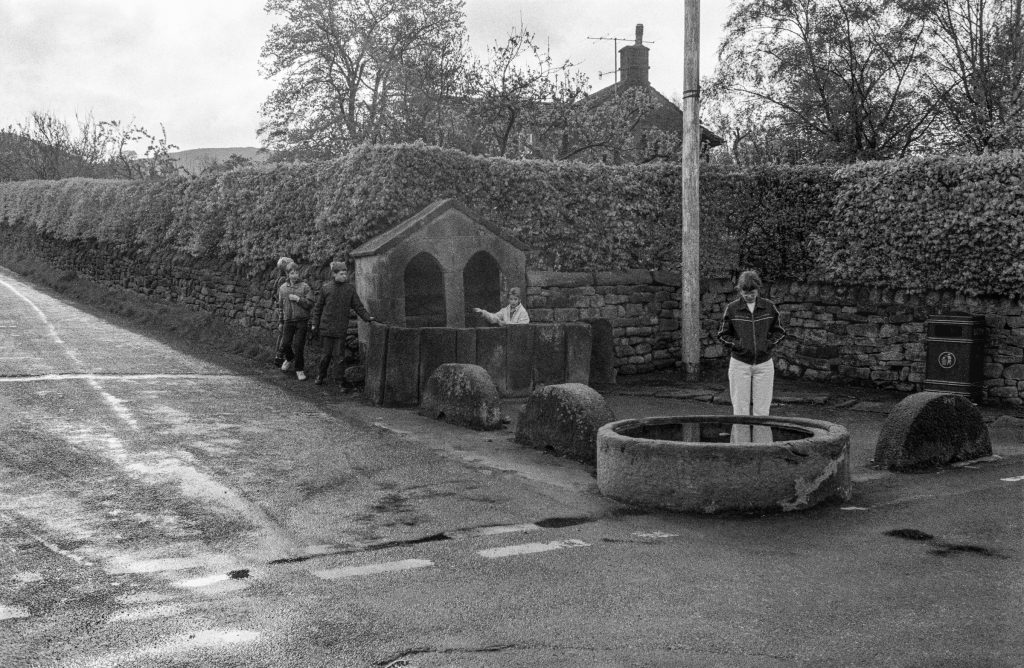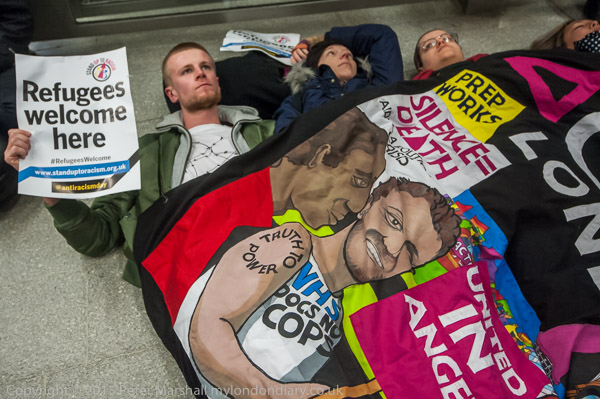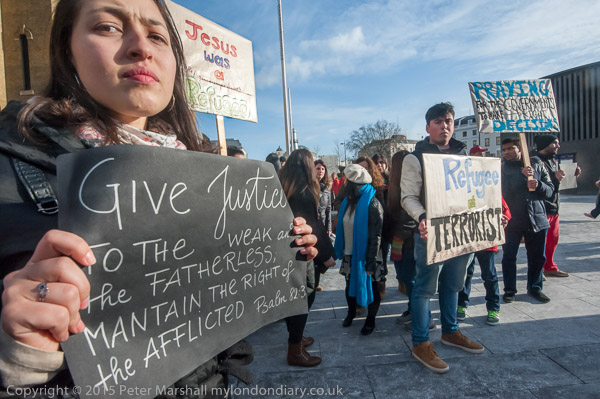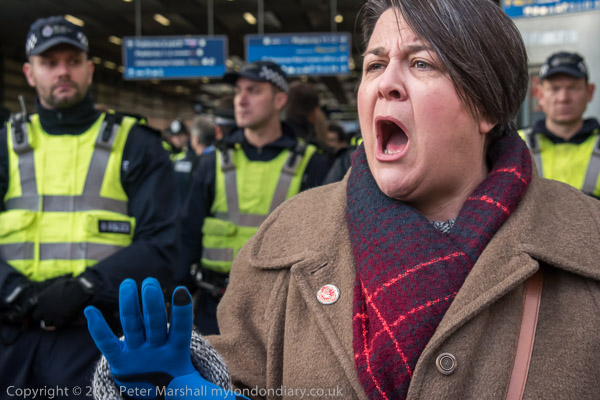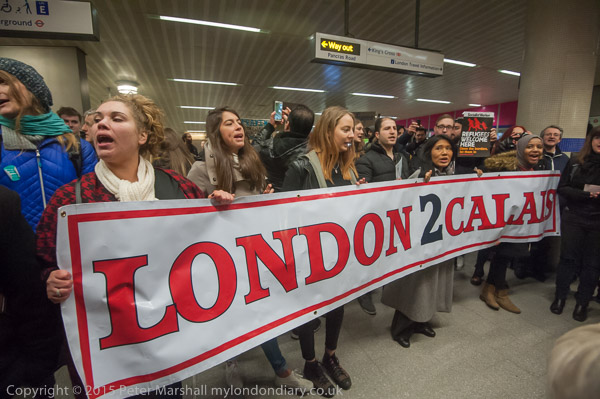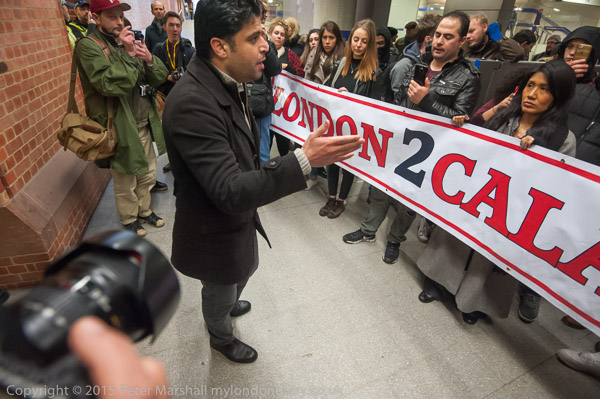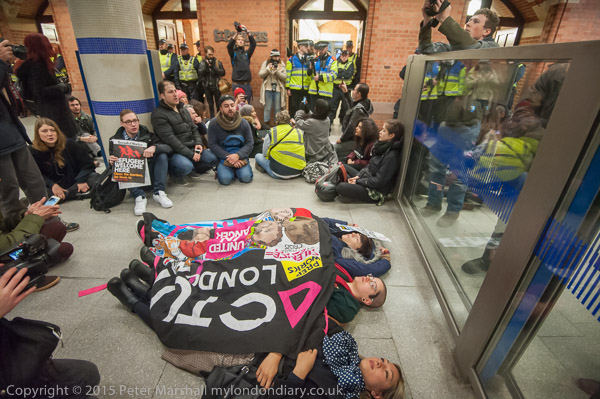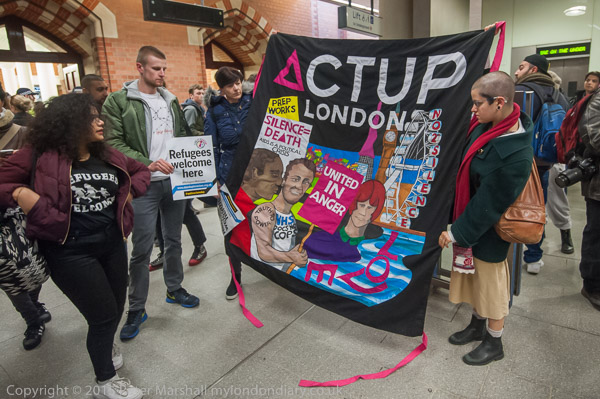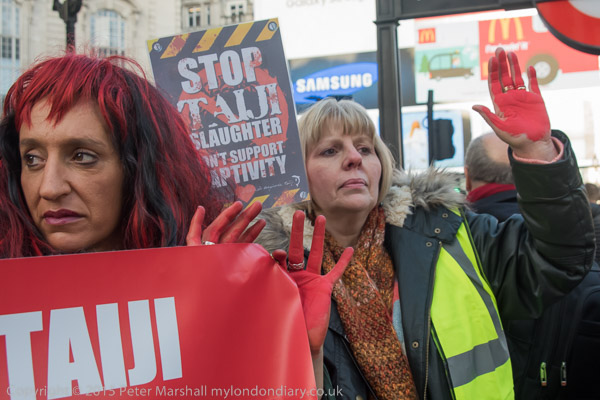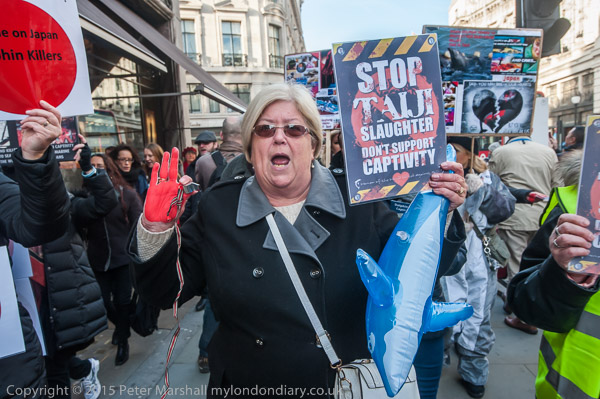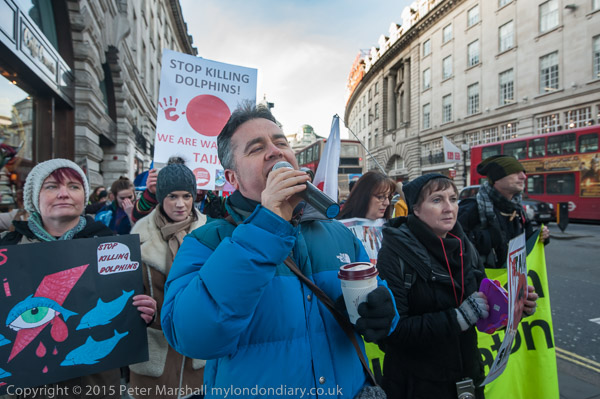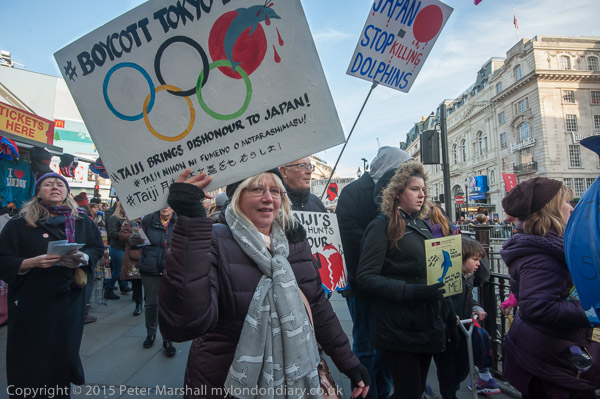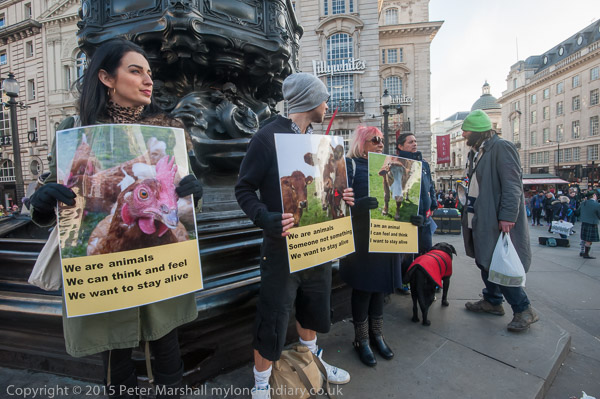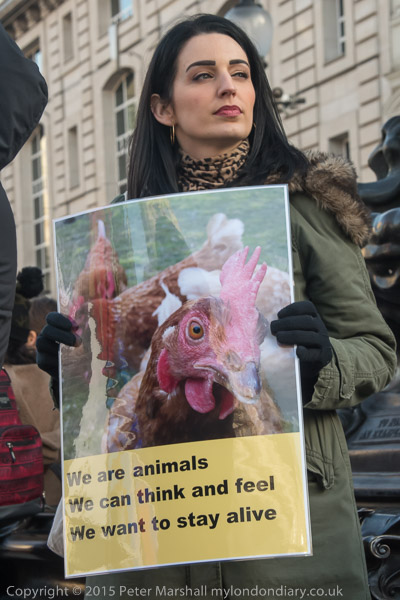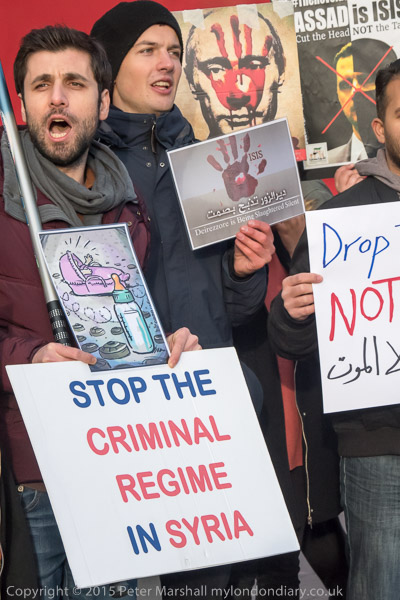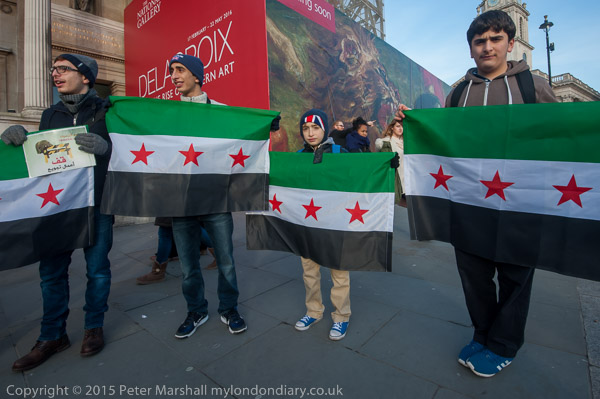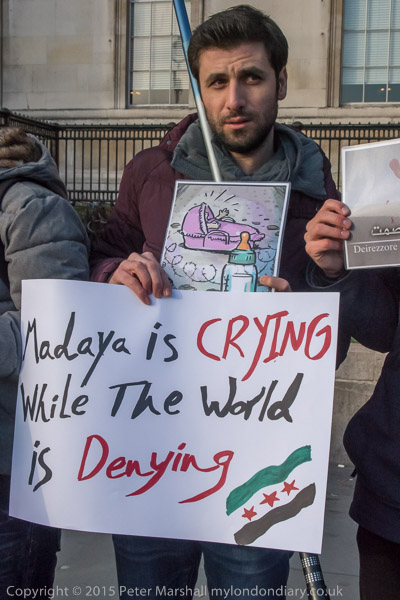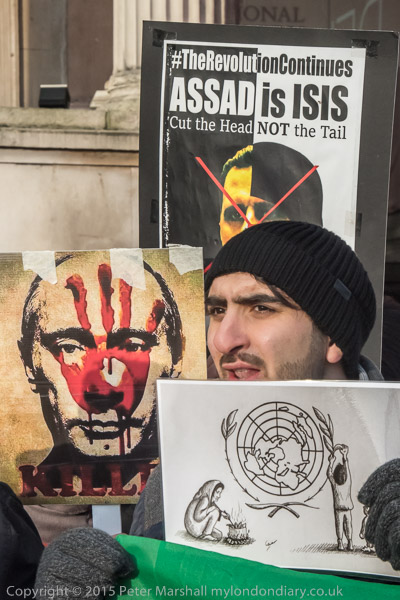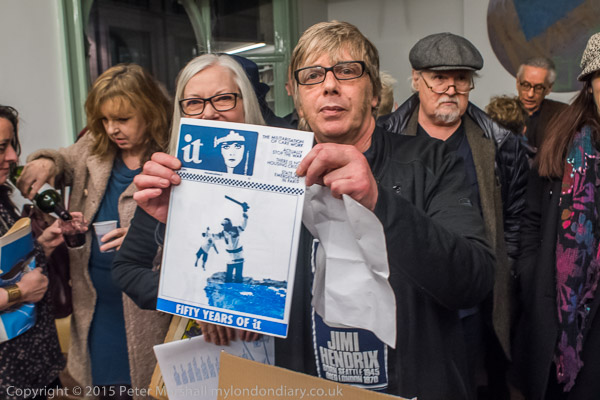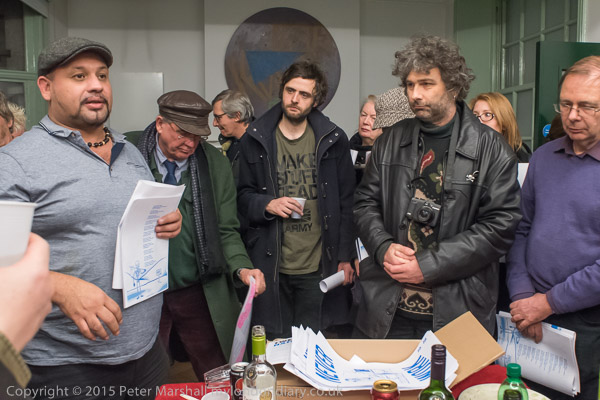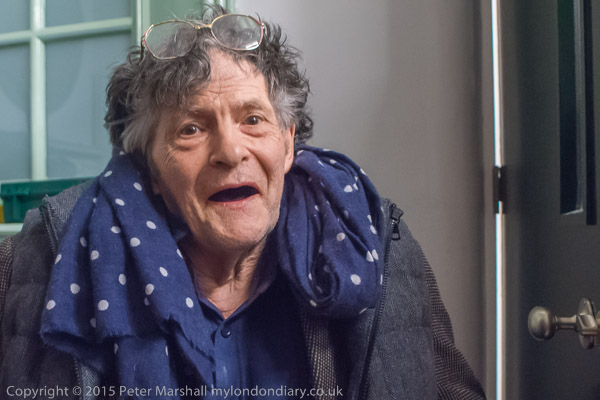Dancers, Shops, Gym, Laundry, a Lab and Cobblers: The next set of pictures from my walk on February 18th 1990 around Kings Cross & St Pancras. The previous post on this was St Pancras Old Church & More – 1990.
This was my favourite mural in London on the side of Stanley buildings and one I’d photographed several times since 1985. Unusually it was painted in black and white and it extended across the whole side of the flats from first floor level to the chimneys. You can see an image in colour I made a few months earlier from a similar viewpoint on Flickr.
Nearby on Pancras Road I photographed this rather finely proportioned frontage with some interesting brickwork and decoration at its top. I wish I had made another exposure to show more clearly the two busts at the left of the ground floor.
Another image of the Pancras Road frontage of the German Gymnasium in a row of shops including the St Pancras Cafe. All this was lost for the redevelopment of St Pancras International – with the Gymnasium being given a new modern frontage in a style matching the rest of the building.
To the east of Kings Cross the first turning to the right from York Way is Caledonia Street. I’d photographed the laundry with its large intertwined KCL insignia on a walk the previous year. Although there were more recent signs for occupiers including those for Lanitis Fabrics Ltd, and Stella Models and signs calling for Machinists, Overlockers, Pressers, Finishers and Cutters, the building appeared to be no longer in use.
The building is still there, though all of the sings apart from the ‘KCL’ have gone and it is now offices with a gateway leading into the ‘Regent Quarter’ redevelopment.
A little further to the north is Wharfdale Road, another right turning from York Way and from that New Wharf Road goes to the north. These two roads are on the south and east of the ‘new wharf’, Battlebridge Basin on the Regent’s Canal, serving the wharves around its sides.
A large notice on the lefthand buildin, formerly MAMMA ROMA, advertises the development of Battlebridge Basin with 3 buildings with planning consent for offices.
The next building on the road was the then derelict Ozonol Laboratories, Manufacturing Chemists. In 1932 the company had patented a product for “disinfecting mouthpieces of telephones, speaking tubes and the like” and similar products mainly under the similar names: “Ozonol”, “Ozlab”, “Oztox” and others were marketed for use in air purifiers and as an ointment for treating sunburn and hemorrhoids and a wide range of other uses. Ozonol ointments are still sold in some countries though probably not containing some of the original components such as lead oxide.
I walked through to Caledonian Road where I photographed through the window of this cobblers shop with its phone, hand-made sign, electric fire and general clutter. It looked then like something out of an earlier age.
It was time to go home, and I walked back to the tube at Kings Cross.
Flickr – Facebook – My London Diary – Hull Photos – Lea Valley – Paris
London’s Industrial Heritage – London Photos
All photographs on this page are copyright © Peter Marshall.
Contact me to buy prints or licence to reproduce.







